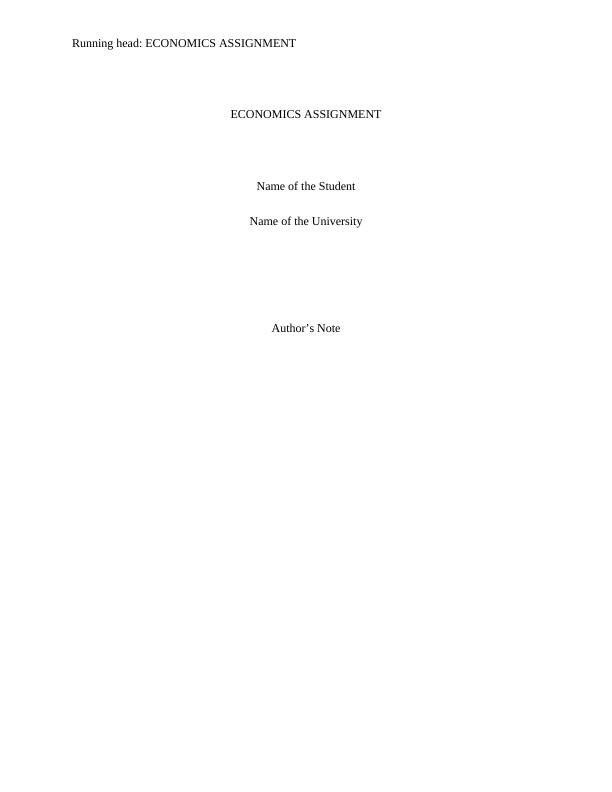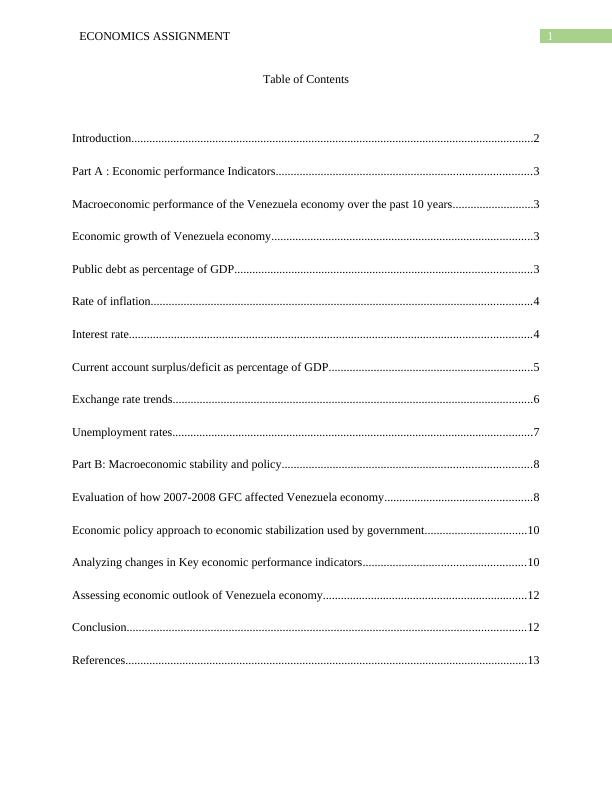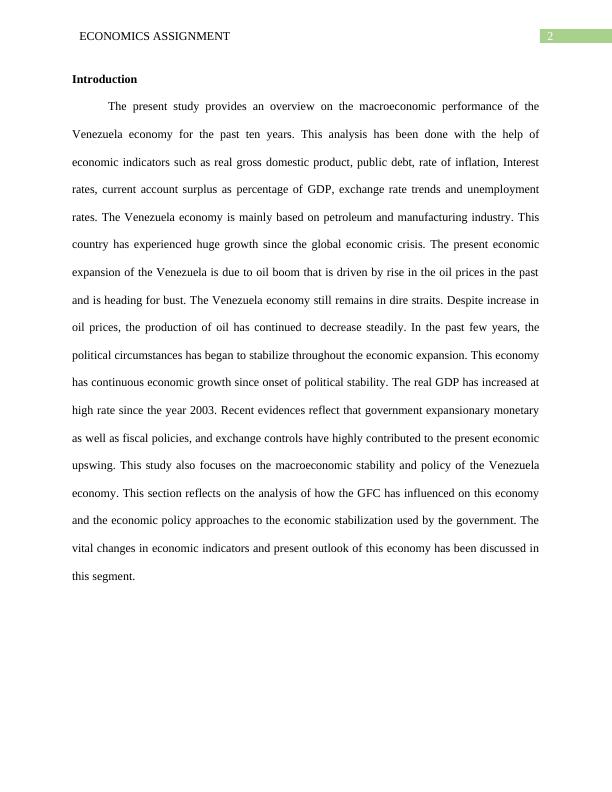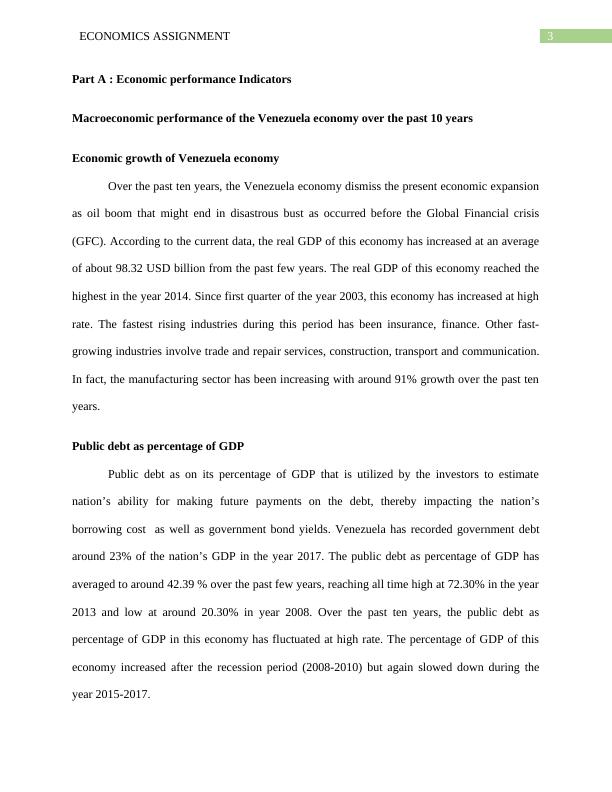Macroeconomic Performance and Stability of Venezuela Economy
15 Pages3058 Words160 Views
Added on 2023-06-05
About This Document
The present study provides an overview on the macroeconomic performance of the Venezuela economy for the past ten years. This analysis has been done with the help of economic indicators such as real gross domestic product, public debt, rate of inflation, Interest rates, current account surplus as percentage of GDP, exchange rate trends and unemployment rates. The Venezuela economy is mainly based on petroleum and manufacturing industry. This study also focuses on the macroeconomic stability and policy of the Venezuela economy. The future of the Venezuela economy depends on the government's ability to implement effective economic policies and stabilize the political situation.
Macroeconomic Performance and Stability of Venezuela Economy
Added on 2023-06-05
ShareRelated Documents
End of preview
Want to access all the pages? Upload your documents or become a member.
Macroeconomics: Economic Performance Indicators of Italy
|21
|4325
|89
Macroeconomics Indicators Australia
|17
|3641
|103
Macroeconomic Performance of Australia from 1990 to 2016
|13
|3611
|62
Evaluation Of Macroeconomic Performance of Australia
|13
|3244
|47
Macroeconomics Performance of Australia
|14
|4190
|34
Economics Development - Solved Assignment
|14
|3546
|38




